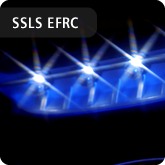Since the late 1970s, the Fossil Energy program has developed and transferred Sandia technologies to assist the natural gas and oil industry, especially U.S. independent producers. Our goal is to maintain a secure, economic supply of the nation’s natural gas and crude oil. To this end, we develop improved recovery and processing technology using our expertise in geoscience, advanced diagnostics and imaging, drilling technology, materials and process science, advanced storage systems, and combustion science.
Program influences on the domestic oil and gas industry include:
- Reduced well failure rate at Belridge, CA, oil field from 10 percent to 5 percent per year, resulting in an annual savings to operators of $25 to $50 million in lost production.
- Automatic Casing Swab yielded $2 million in federal tax revenue and $10 million in reserves to a West Virginia operator.
- Salvo seismic imaging algorithm development wins 1999 R&D 100 Award.
Thrust Areas
The program capitalizes on Sandia’s unique experience with research and development in the following Thrust Areas:

Diagnostics-While-Drilling will provide real-time, high-speed data downhole drilling conditions. By integrating this data with surface measurements, the driller will be able to select actions that prevent or mitigate drilling problems. Eventually the control loop will also be able to send commands to active components downhole.
Well Construction
- Develop and lead Department of Energy’s program in Diagnostics While Drilling
- Take and maintain the national laboratory lead in developing faster, deeper, cheaper, and safer drilling technology
- Address the need for the expansion of natural gas needs for the first half of the 21st century
Reservoir Evaluation & Production
- Lead the development of coupled geophysical, geochemical, geomechanical, and hydrogeological approaches to understand and simulate reservoirs and advanced recovery
- Address the need for the expansion of natural gas supply
Storage & Transmission
- Develop and market approaches to address natural gas deliverability
- salt cavern and hard-rock-mine storage
- reservoir storage
- infrastructure surety
Energy & Water
- Improve water-use efficiency for thermoelectric power generation (coal, oil, natural gas, and nuclear).
- Develop new drilling and production technologies that require and produce less water.
- Develop more cost effective approaches to mitigate the impact of produced water.
Fuel Utilization
- Align with Vision 21 Strategy
- Maintain and grow fuel cell development and distributed power
- Prepare for FY00 and FY01 Department of Energy initiatives in Clean Fuels
- Lead development of energy portfolio analyses

Laser-induced breakdown spectroscopy instrumentation installed on stack of steam generator. Project: Real-Time Monitoring of Particulate Matter and Particulate Matter Precursor Emissions from Stationary Sources
Environmental
The Environmental Thrust Area includes two areas: Carbon and Upstream, and Downstream Impacts.
- Develop and lead intermountain laboratory, university, and industry partnership to demonstrate carbon sequestration in geologic reservoirs and membrane separation technology
- Leverage Sanda National Laboratories’ sensor systems, environmental technology, and combustion research into developing upstream and downstream environment technology
- Develop a program to address scale, corrosion, and Naturally Occurring Radioactive Material (NORM) issues
Alignment with Internal and External Initiatives
- Power for Peace and Prosperity (SNL)
- Natural Gas and Oil Technology Partnership (DOE/FE)
- Vision 21: Power Generation of the Future (DOE/FE)
 ECIS Highlights
ECIS Highlights













 RSS
RSS Google+
Google+ Twitter
Twitter Facebook
Facebook LinkedIn
LinkedIn YouTube
YouTube Flickr
Flickr
